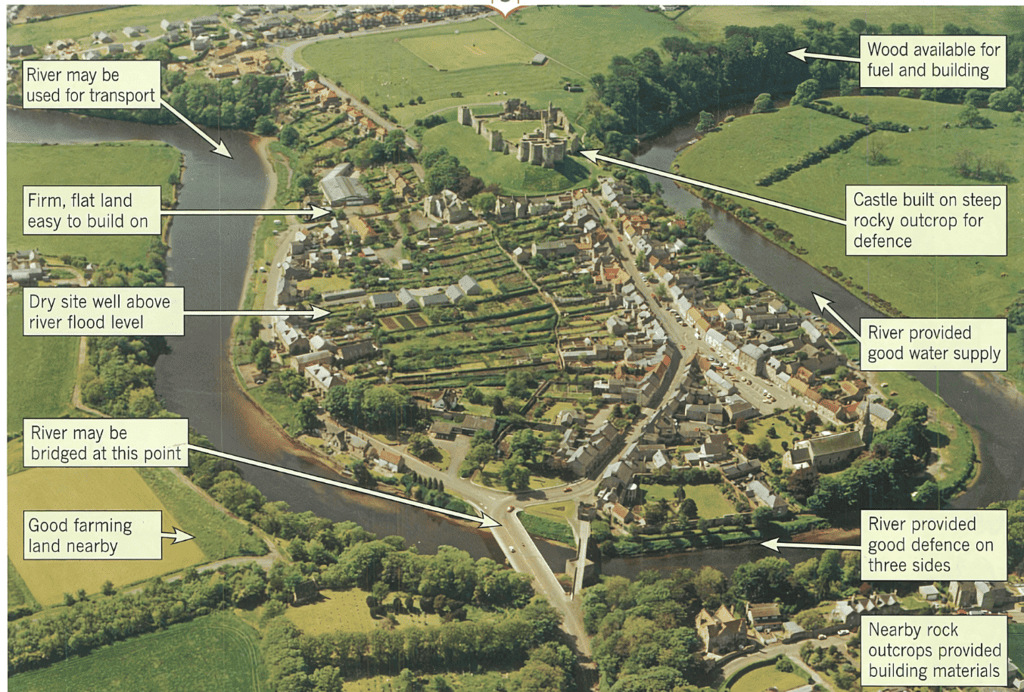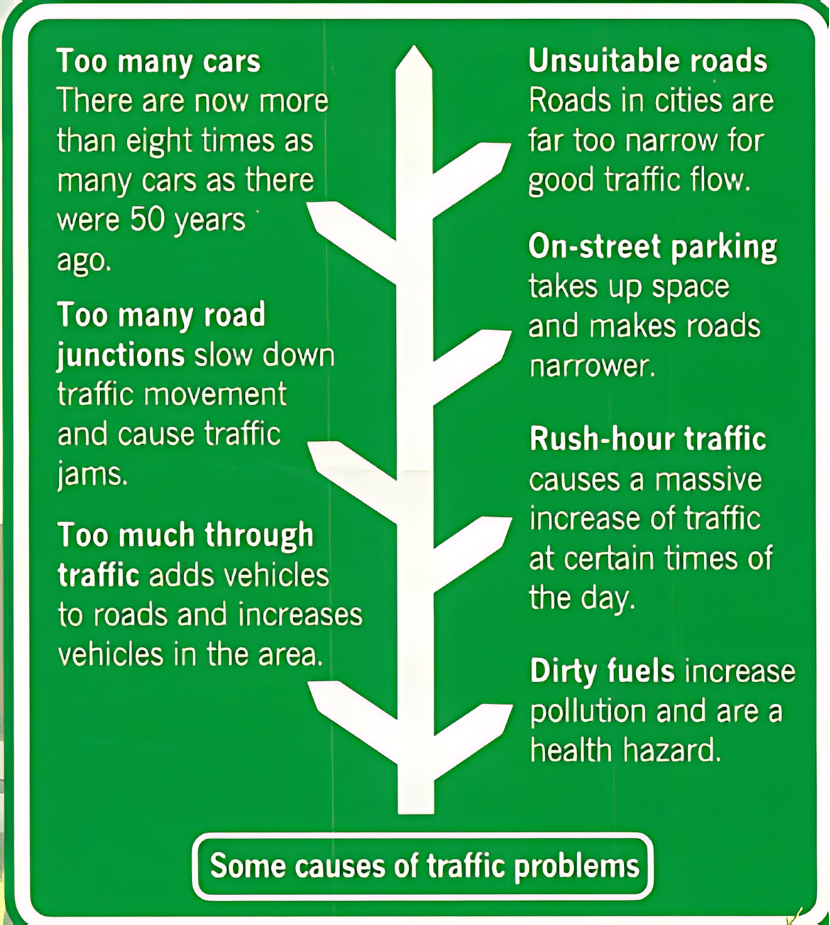Best Study Material for Class 6 Exam
Class 6 Exam > Class 6 Notes > IGCSE Oxford Geography Foundations for Year 6 > Chapter Notes: Urbanisation
Urbanisation Chapter Notes | IGCSE Oxford Geography Foundations for Year 6 - Class 6 PDF Download
Why is Learning About Settlements Important?
- Settlements have a direct impact on our daily lives as most people reside in some form of settlement (village, town, city etc.)
- Understanding settlements helps appreciate the needs/challenges of people living there (housing, transportation, amenities etc.)
- Aids in making informed decisions about where to live in the future based on personal preferences and settlement characteristics
- Provides insight into urban planning issues faced by town planners in managing growth, land use, public services etc.
- Enables understanding of how transportation choices and environmental policies can improve quality of life in settlements
How were the sites for early settlements chosen?
- Site selection was critical for early settlements, driven by availability of natural advantages
- Protection was a key factor - settlements located on hilltops/elevated areas for defense and warning against attacks
- Water supply was vital for drinking, cooking, washing - proximity to rivers, springs, wells was preferred
- Flat land suitable for construction of shelters and agriculture was desirable
- Ease of transportation via river crossings/fords was an advantage
- Nearby resources like wood for fuel/construction and stone for building materials were beneficial
- Example of Warkworth village highlights ideal site with river, flat land, elevation, nearby resources like wood/stone

What different settlement patterns are there?
- Dispersed pattern - Buildings spread out across a large area, common in highland regions where terrain didn't allow concentrated construction. More land needed for crops/livestock.
- Nucleated pattern - Buildings tightly clustered together, developed for communal security reasons. Typical in lowland Britain.
- Linear pattern - Settlements strung along a road, river valley or other linear landscape feature due to lack of open space.
How do settlements change with time?
- No settlement remains static, undergoing changes in shape, function, land use and population over decades
- Shape can transform from tightly clustered to dispersed suburban sprawl as a settlement grows
- Function may shift from agricultural to industrial/commercial or residential overtime
- Land use evolves based on economic activities - from farms to housing or commercial zones
- Population changes due to migration patterns, employment opportunities, amenities
- Example traces transition of a typical 1890s village of tightly packed cottages and farmworker population to a dispersed, suburbanized settlement by 2010
Question for Chapter Notes: Urbanisation
Try yourself:
Why is it important to learn about settlements?View Solution
What are the benefits and problems of settlement growth?
Benefits:
- More housing options to buy or rent available for growing population
- Increased job opportunities across varied sectors, potentially higher paying
- Better reliability of food supplies through more shops/supermarkets
- Improved transportation connectivity reduces work/shopping commutes
- Access to better civic services and amenities like schools, hospitals, recreation
- Attractions like entertainment, cultural events cater to varied interests
Problems:
- Traffic congestion on roads not designed for high vehicular volumes
- Air, noise, visual pollution from traffic and industrial activities
- Inadequate affordable housing supply, rise in home prices
- Growth of slums/dilapidated areas with lack of amenities
- Higher crime rates in underdeveloped areas
- Unemployment due to skills mismatch or economic shifts
- Strain on civic infrastructure and public services
Why are there different land use patterns in towns?
- Towns develop distinct zones over time based on the nature of activities
- Central Business District (CBD) - Oldest part of town, concentrated commercial hub with shops, offices, no housing
- Inner City - Former industrial areas, old worker housing projects like tenements
- Inner Suburbs - Larger semi-detached houses with some open spaces developed in early 20th century
- Outer Suburbs - Modern larger houses, shopping malls, business parks established since late 20th century
Question for Chapter Notes: Urbanisation
Try yourself:
What are some problems associated with settlement growth?View Solution
Why does land use in towns change?
- Urban redevelopment projects revitalize and transform old dilapidated areas
- Example of London Docklands redevelopment in 1980s - cleared old docks/warehouses, replaced industries
- Brought new office spaces for tech/finance firms, modernized housing, upgraded transportation links
- Improved environment with green spaces but also gentrification issues
- Some groups benefited (new businesses, skilled workers) while others were displaced (older residents, job mismatch)
Where do we shop?
- Shopping patterns depend on the type of goods and convenience of access
- Convenience goods (food, newspapers etc.) bought at nearest stores for ease
- Comparison goods (clothes, furniture etc.) bought at larger shopping destinations after evaluating options
- City centers traditionally had biggest cluster of stores but issues like congestion
- Large out-of-town malls developed to provide ample parking and accessibility by roads
 |
Download the notes
Chapter Notes: Urbanisation
|
Download as PDF |
Download as PDF
How has shopping changed?
- Rise of out-of-town shopping malls/centers at edges of cities easily accessible by cars
- Offer parking, variety of stores/amenities like food, entertainment under one roof
- Led to decline of some city centers and local small stores unable to compete
- Increased dependence on cars/personal vehicles for shopping
- Environmental concerns like increased pollution, traffic in surrounding areas
- Some restrictions on new mall developments to revive city centers
Traffic in urban areas - why is it a problem?
- Rapid increase in number of personal vehicles on roads not designed to handle such high volumes
- Causes problems like traffic jams/congestion hampering mobility, pollution, noise, delays in emergency services
- Old city layouts with narrow roads from pre-automobile era not suited for modern traffic
- Density of roads/intersections in cities and lack of parking exacerbates troubles
- Through-traffic of vehicles just passing through adds to traffic woes
- Concentration of traffic during peak hours/rush hour chokes roads

Question for Chapter Notes: Urbanisation
Try yourself:
Why do urban redevelopment projects often result in gentrification?View Solution
Traffic in urban areas - is there a solution?
- Integrated policies needed to tackle root causes like vehicle numbers and road capacity
- Traffic management solutions like pedestrianization, parking restrictions, road pricing
- Improving public transport with dedicated lanes, efficient systems to reduce car dependence
- Park-and-ride facilities, working from home can help reduce traffic volumes
- Urban planning reforms to create more sustainable communities with jobs-housing balance
- Stricter vehicle emission norms, shift to cleaner fuels to reduce pollution
Where should the by-pass go?
- By-passes are alternative roads built to route traffic away from congested areas
- Process is complicated - requires funding, route planning, public consultations
- Factors like cost, environmental impact, sentiments of residents affected need consideration
- Longer by-passes circumvent entire cities, shorter ones redirect traffic around small towns
- Opinions vary on ideal by-pass routes between stakeholders with different priorities
The document Urbanisation Chapter Notes | IGCSE Oxford Geography Foundations for Year 6 - Class 6 is a part of the Class 6 Course IGCSE Oxford Geography Foundations for Year 6.
All you need of Class 6 at this link: Class 6
|
13 videos|17 docs|5 tests
|
FAQs on Urbanisation Chapter Notes - IGCSE Oxford Geography Foundations for Year 6 - Class 6
| 1. How were the sites for early settlements chosen? |  |
| 2. What different settlement patterns are there? |  |
Ans. There are various settlement patterns, including linear settlements along roads or rivers, clustered settlements where buildings are close together, dispersed settlements with buildings spread out, and nucleated settlements with buildings gathered around a central point.
| 3. How do settlements change with time? |  |
Ans. Settlements can change over time due to factors such as population growth, technological advancements, economic development, urbanization, and changes in land use. This can lead to the expansion of settlements, the development of new infrastructure, and the evolution of urban planning.
| 4. What are the benefits and problems of settlement growth? |  |
Ans. The benefits of settlement growth include economic opportunities, improved infrastructure, access to services, and cultural diversity. However, it can also lead to issues such as congestion, pollution, strain on resources, inequality, and loss of green spaces.
| 5. Why are there different land use patterns in towns? |  |
Ans. Different land use patterns in towns are influenced by factors like zoning regulations, population density, economic activities, infrastructure, historical development, and urban planning policies. These factors determine where residential, commercial, industrial, and recreational areas are located within a town.
Related Searches





















